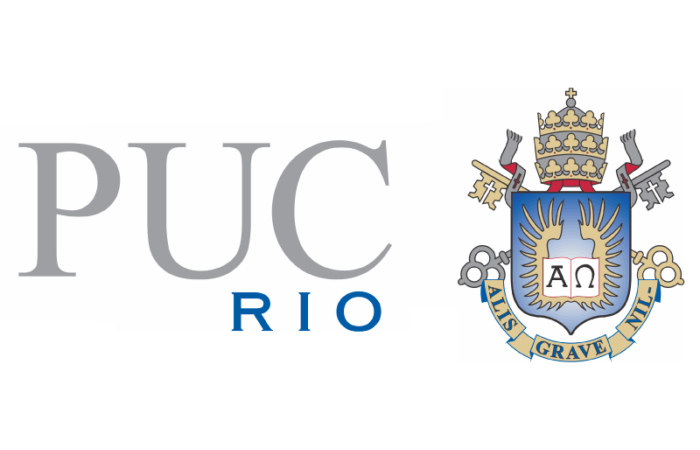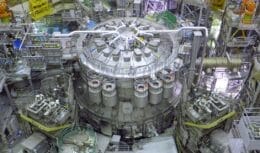
Via PUC-RIO – On the afternoon of 24/11, the technical team of the Department of Industrial Engineering of the Scientific Technical Center of PUC-Rio (CTC/PUC-Rio), together with the president of BRASILCOM, Mauricio Rejaile, of the executive vice president of BRASILCOM , Abel Leitão and federal deputy Christino Áureo (president of Freper – Parliamentary Front for the Sustainable Development of Petroleum and Renewable Energies), presented the results of the study “Future of RenovaBio: comparative aspects, functioning and its effects on the fuel distribution sector”.
The study is sponsored by Brasilcom and had the participation of the following professionals and scientists from CTC/PUC-Rio: Antônio Márcio Tavares Thomé (PUC-Rio), Allan Cormack (PUC-Rio / UFRJ), Milena Mansur (PUC-Rio) , Frances Blank (PUC-Rio), Amanda Chiote Cabral (PUC-Rio) and Lia Piovesan (PUC-Rio).
Other news and projects that PUC-RIO is involved in
- Study that proposes improvements in cargo formation for maritime shipment of oil products, by a CTC/PUC-Rio student, wins the ABEPRO 2020 Award in the Best Professional Master's Dissertation category
- Technology developed by oil and gas company Ouro Negro promises to boost mature offshore fields
- Total invests BRL 15 million to develop unprecedented technology in Brazil
Contextualization
In context, the study opens confirming the increase in energy consumption in the world by 2,9%, most of which was met by fossil fuels, leading to a 2% increase in global carbon emissions. Renewable energy, even having grown by 7,2%, the rate is still lower than the 12% growth of the energy system as a whole.
The Brazilian targets defined in the Paris Agreement for reducing carbon emissions were presented: 37% by 2025 and 43% by 2030. It was clear that Brazil has one of the lowest levels of carbon intensity within the G20, second only to Italy , United Kingdom and France, according to PwC data. Transport accounts for 46% of total emissions in Brazil and, among those that use renewable sources for energy consumption, industry accounts for 57% and transport for 20%. Emissions were measured using the MTCO2 unit, which corresponds to Metric tons of carbon dioxide equivalent. Metric that compares emissions of different greenhouse gases based on their global warming potential (GWP).
Methodology
The study methodology addressed the topics below, with the following conclusions, recommendations and guidelines:
Regulatory mechanisms and instruments on climate policies:
- It is necessary to evolve the initial version of the RenovaBio Program, learn and incorporate good practices from more mature programs/laws/guidelines (for example: verify the possibility of new credit generation mechanisms through projects or alternative means – similar to LCFS).
- Monitoring and review of the goals defined in this initial phase of the RenovaBio Program, with the involvement of multiple stakeholders (seeking to avoid “asymmetry” and parity between the obligated parties / generating sources).
- It is suggested that the way in which CBIO credits are generated be rethought via technological innovation projects associated with decarbonization (not only related to biofuels per se), with the need to identify mechanisms for making these projects viable (via public calls, public notices for development, clause regulatory agencies focused on R,D&I, among other mechanisms).
- Public policies and support instruments are needed to encourage the development of advanced biofuel projects (for example: “green diesel” / HVO - Hydrotreated Vegetable Oil and “biokerosene” / SPK - Synthesized Paraffinic Kerosine) until the learning curve is overcome and the scale gain can reduce costs.
- The RenovaBio Program in its initial version lacks alternative mechanisms for generating CBIO credits (public calls for tenders, technological innovation projects with an emphasis on reducing carbon intensity), a fact identified as a differential in the LCFS program.
- Necessidade de convergir esforços com outros órgãos, instituições e políticas públicas visando a redução efetiva da emissão de GEEs e da intensidade de carbono ao longo de toda a ****** de transportes.
Decarbonization credit trading system (CBIO)
- A high increase and uncertainty was identified in CBIO prices (a significant increase until the beginning of November and an abrupt drop after the result of the Brasilcom injunction), ranging from R$16 initially to R$65 and decreasing again to approximately R$48 after the result of the injunction, highlighting hence the importance of analyzing the possibility of defining a 'ceiling value' (similar to the LCFS after the first years of implementation). Furthermore, it is emphasized that the CBIO price is excessively unstable and sensitive to certain market variations.
- Need to guarantee a sufficient amount of CBIO credits to cover compliance with the requirements of the obligated parties.
- The RenovaBio Program can act as a catalyst, establishing and enabling alternative means to meet the targets of the obligated parties (examples: recovery of steam in the tank truck - Phase 1 - and at the pump - Phase 2; boosting the production of "green diesel" and aviation biokerosene ; distributors generate CBIOs by blending biofuels into their products and through the production of clean energy at their facilities - such as energy efficiency projects that effectively reduce energy costs).
- Need to ensure the proper functioning of the CBIO trading market, seeking transparency and compliance with good market practices.
- It is observed that, despite all the benefits evidenced by the RenovaBio Program, there is asymmetry between the parties involved (on the one hand, the obligated party has a goal of acquiring CBIOs and, on the other hand, the source generating credit does not have generation target or deadline for availability in the market).
- Needs for revisions in modeling:
- Considering that the program is in its initial phase and not all agents have already adhered to the certification process, it is recommended that some sensitivity analysis be performed on the variation in the interval length of the upper and lower limits of the uniform distributions of the consumption projection model that was the basis for the calculation of goals.
- Furthermore, to ensure the robustness of the model, an assessment of how the variation in the interval interferes with the results would be recommended, since the proposal establishes goals for the next decade and the difference in profile between the certified agents may undergo considerable changes.
- Additionally, considering asymmetrical distribution among agents, it is suggested to simulate a beta distribution focused on the minimum values of the confidence interval, which would be more consistent with the expectation of the real distribution of the market with the obligated party.
- With regard to certification, it is necessary to pay attention to the differences between the parameters of the current scenario of the ANP Dynamic Panel and the parameters that were used in the remodeling of the targets.
On the Effects of the RenovaBio program on the fuel distribution sector:
- Considering the high participation of state taxes in the formation of fuel prices and the tax asymmetry between states that accentuates the way in which the fuel sector is impacted by the RenovaBio Program, consumers from different markets may be subject to effects of different dimensions depending on the strategy of distributing agents.
- In general, in the ten-year scenario, the estimate of the impact of the cost of CBIOs on sales of Gasoline C and Diesel Oil B (R$/L), exceeds the average margin of the distribution sector and it is almost inevitable that the totality of this cost will be passed on to the final consumer. Thus, even though the program's proposal is focused on the private initiative (in order to save public coffers), the taxpayer may be bearing the expense of a good part of the energy transition. was carried out considering fair and transparent competition between market agents. However, the fuel distribution sector has a history of unreliable operations.
- Com apoio do Instituto Combustível Legal, foram atualizadas estimativas de impacto da ordem de R$ 7 bilhões de sonegação de impostos, além de outros R$14 bilhões de desvios operacionais na ****** de combustíveis.
- This fact indicates that tax and inspection corrections in the sector in order to guarantee the collection of the entire tax potential of fuels would generate an amount greater than the cost of CBIOs, which could be used to enable new projects, infrastructure expansion and promotion of the transition energy without transferring this additional cost to the Brazilian taxpayer and without generating competitive distortions in the distribution market.
- Since Brazil has a deficit in the production of fossil fuels, the Brazilian pricing of diesel oil and gasoline A is based on the PPI (Import Parity Price), which already adds to the price the uncertainty of the cost of commodities in the international market and the exchange rate. The CBIO, as it is mostly issued by the same producer that determines its sugar/ethanol mix depending on the conditions of the sugar market, will also transmit to the pricing of diesel oil and gasoline A the uncertainties associated with the international sugar market.











A country without technology and that doesn’t…
We should help conserve our forests…
The Report is wrong, there is no…
I don't know where they think...
Now Cuiabano says Argentina…
The opportunities they are giving are very good
Lots of interest
How crazy! Culture of disinformation.